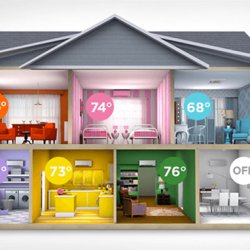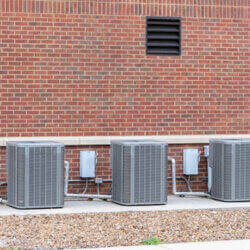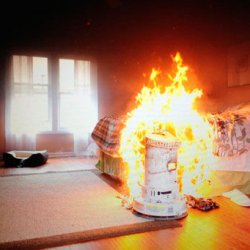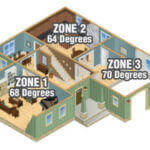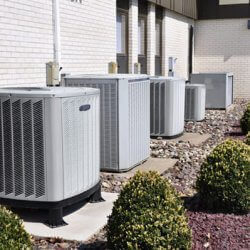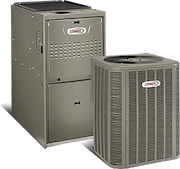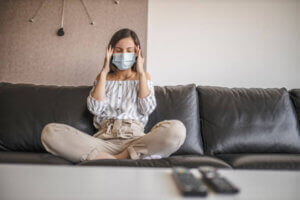
Many Americans spend most of their time indoors- in the office or at home. According to the EPA (Environmental Protection Agency), the concentration of indoor air pollutants is 2 to 5 times more than outdoor concentrations. As such, indoor air pollutants cam be more dangerous than outdoor ones.
While indoor air pollutants can cause a range of serious health problems, the good news is that you can easily avoid them by following a few simple steps.
3 Key Indoor Air Pollutants
Here are the three main indoor air pollutants and ways to avoid them:
VOCs and Paint
Many household products have Volatile Organic Compounds or VOCs as ingredients. VOCs are organic chemicals that become gases (vaporize) at room temperature. Some of the common household items that release VOCs include paints, wax, cleaning products, and varnishes.
Some specific VOCs commonly linked to indoor air pollution include:
- Xylenes (cigarette smoke, paint, gasoline)
- Toluene (nail polish removers and paint)
- Trichloroethylene (aerosol cleaning products, cleaning wipes, carpet cleaners)
- Styrene (packaging material, drinking cups)
Health effects of VOCs range from headaches, wheezing, cough, burning eyes, and neurologic problems to even certain cancers.
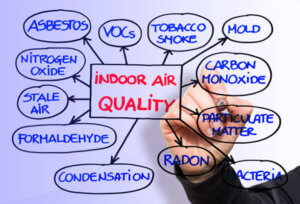
These steps can help you minimize the impact of VOCs in your home:
- Use household products as per the directions.
- Dispose of old chemicals or containers appropriately.
- Buy limited quantities of these products.
- Avoid UF foam insulation.
- Ensure good ventilation when you use these products.
- Install exhaust fans.
Excess Moisture
Excess moisture is another common source of indoor air pollutants. This encourages the growth of mildew, mold, and dust mites, that increase the risk of asthma or allergies. High indoor humidity damages wood products while accelerating rusting of metal components. Sources of moisture include plants, kitchen and bath activities, unvented gas appliances, basement leaks, or rain. Moisture can also seep in from the ground through porous materials.
Signs of excess moisture include damage to wooden furniture and doors, smelly air, dampness on walls, damp clothes, asthma, and allergies.
Some tips to reduce moisture include:
- Improving ventilation in your indoor spaces is the best way to prevent moisture build-up. The air conditioner helps reduce humidity indoors because it removes warm air and introduces cooler air. Tune your air conditioner regularly, change the filter, and ensure the airflow is not restricted to optimize humidity control.
- Use exhaust fans to remove moisture in the kitchen and bathroom and ensure crawl spaces are well ventilated.
- Turn off humidifiers if you use them and use dehumidifiers when needed in particularly damp spaces.
- Fix leaks and water seepage from the basement or other external sources. Modify the landscaping to allow water to drain away from your home. Waterproofing and fixing broken pipes are other ways to prevent moisture build-up.
Carbon Monoxide
Carbon monoxide is an odorless and colorless gas that can cause unconsciousness and death at high concentrations. At lower levels, symptoms from this indoor air pollutant range from dizziness, headaches, and nausea to disorientation and fatigue. Dead houseplants, improperly vented furnaces, ranges, water heaters, and other poorly adjusted or worn-out gas-fired appliances are frequently the sources of carbon monoxide.
Take these steps to prevent CO pollution:
- Ensure gas appliances are properly adjusted.
- Install an exhaust fan over gas stoves.
- Open flues when using fireplaces.
- Choose wood stoves that are in line with EPA emission standards.
- Repair any leaks in chimneys, flues, or furnaces promptly.
- Improve ventilation and clean up your HVAC system regularly.
Contact Galmiche for Help Eliminating Indoor Air Pollutants in Your Home or Office
At Galmiche & Sons, we have over six decades of experience in performing HVAC servicing, repair, and maintenance in St. Louis. Get in touch with our expert heating and air conditioning technicians today to learn more and to ensure your indoor air quality is at an optimal level.



